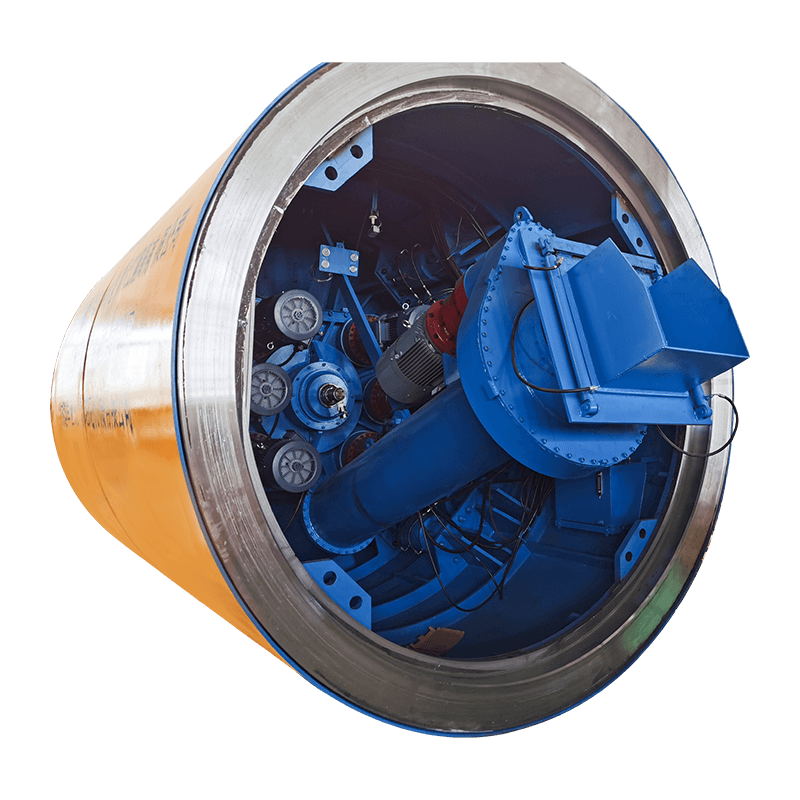In the world of underground construction, innovation has always been key to overcoming the challenges posed by soil instability, groundwater, and urban environments. Among the most groundbreaking advancements in this field is the Earth Pressure Balance (EPB) Pipe Jacking Machine. This technology represents a convergence of precision engineering and environmental sensitivity, making it one of the most effective tools for tunneling today.
What is an EPB Pipe Jacking Machine?
At its core, the Earth Pressure Balance Pipe Jacking Machine is a sophisticated piece of machinery designed to install pipelines beneath the surface without disturbing the ground above. It operates by using a shielded tunnel boring mechanism that simultaneously excavates soil and supports the surrounding earth to prevent collapse. Unlike traditional excavation methods, which often require extensive surface disruption, the EPB method minimizes environmental impact while ensuring structural integrity.
The "earth pressure balance" aspect refers to the machine's ability to maintain equilibrium between the pressure exerted by the excavated soil and the surrounding ground. This balance is critical for preventing subsidence or heaving—two common issues in tunneling that can lead to costly repairs and safety hazards. By continuously adjusting the pressure within the tunnel face, the EPB system ensures stable progress through varying soil conditions.
How Does It Work?
The operation of an EPB Pipe Jacking Machine begins with the cutting head, which rotates to break up the soil at the tunnel face. The excavated material is then transported backward through a screw conveyor into a chamber where it is conditioned with additives like bentonite or foam. These additives improve the soil's fluidity and plasticity, enabling it to be managed more effectively as it travels out of the tunnel.
Behind the cutting head lies the jacking system, which pushes the machine forward incrementally. As each segment of pipe is installed, hydraulic rams provide the force needed to advance the entire assembly further into the ground. Simultaneously, spoil removal systems carry away the excavated material, keeping the work area clean and efficient.
One of the standout features of the EPB system is its adaptability. Whether working through soft clay, sandy soils, or mixed-face conditions, the machine can adjust its parameters to suit the specific geology encountered. Sensors monitor factors such as torque, thrust, and soil pressure in real time, allowing operators to fine-tune performance and avoid complications.

Advantages Over Traditional Methods
Compared to conventional open-cut trenching or other tunneling techniques, the EPB Pipe Jacking Machine offers several distinct advantages:
Minimal Surface Disruption : Because the machine operates entirely underground, there is no need to dig large trenches or disrupt roadways, buildings, or utilities. This makes it ideal for urban areas where space is limited and disruptions must be minimized.
Environmental Protection : The controlled excavation process reduces the risk of groundwater contamination and soil erosion. Additionally, noise pollution is significantly lower compared to traditional methods, benefiting both workers and nearby communities.
Versatility : From small-diameter utility lines to larger sewer mains, the EPB system can handle projects of various sizes and complexities. Its ability to navigate curved paths also expands its applicability in constrained environments.
Safety : By maintaining constant pressure on the tunnel face, the EPB machine mitigates the risks associated with cave-ins and ground settlement. Workers remain protected inside the machine, reducing exposure to hazardous conditions.
Cost Efficiency : Although initial investment costs may be higher than those for simpler methods, the long-term savings from reduced restoration work and fewer delays make the EPB approach highly cost-effective.
Applications Across Industries
The versatility of the EPB Pipe Jacking Machine has led to its widespread adoption across multiple industries. In municipal infrastructure, it is commonly used for installing water supply lines, storm drains, and sanitary sewers. For transportation projects, it facilitates the placement of culverts and underpasses without disrupting traffic flow. Even in industrial settings, the technology proves invaluable for laying conduits for power cables, oil pipelines, and telecommunications networks.
Urban planners particularly appreciate how the EPB method allows them to upgrade aging infrastructure without tearing up city streets. Similarly, developers find it indispensable when constructing basements or parking garages beneath existing structures. Its non-invasive nature aligns perfectly with modern demands for sustainable development practices.













 English
English  русский
русский  عربى
عربى 















